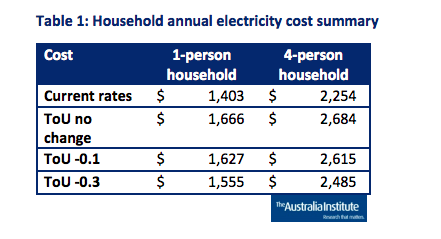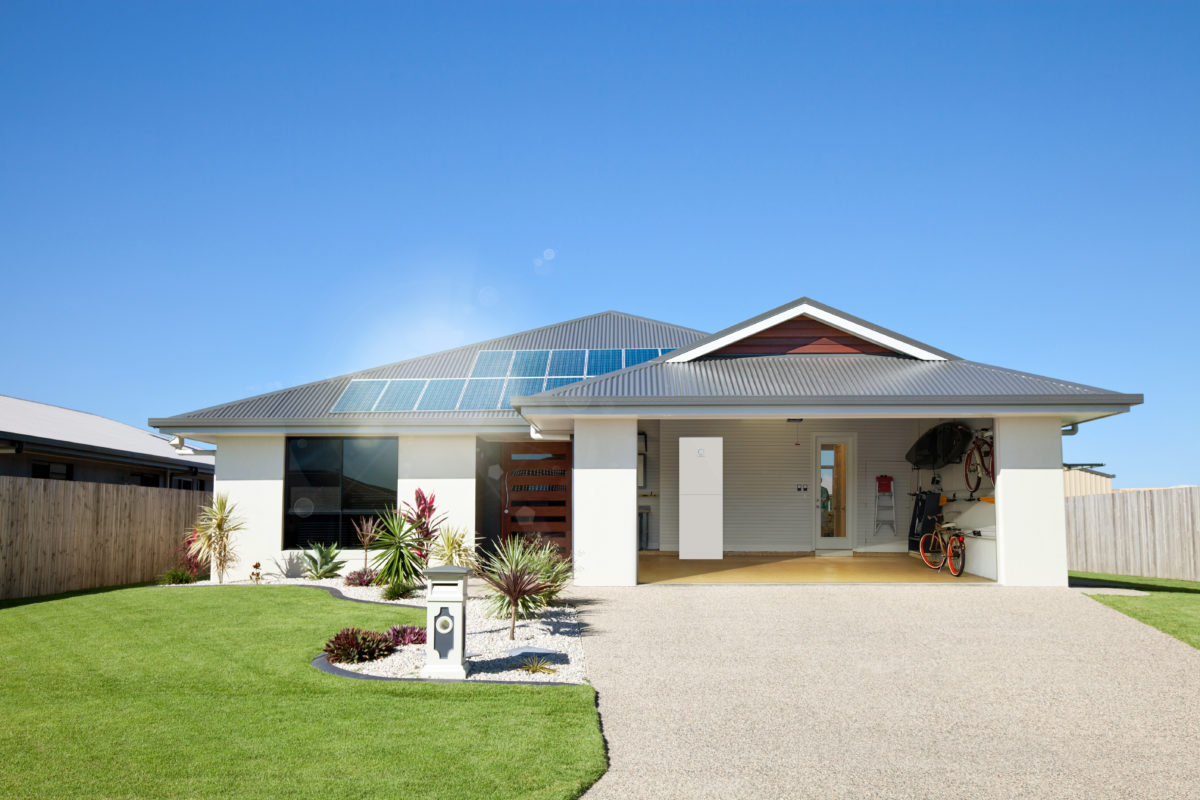In a shift away from a simple electricity pricing structure, electricity companies and regulators have pushed for further tiers of rates under ‘time of use’ (ToU) pricing arrangements in hope to “encourage customers to reduce or move their consumption to times when the network is less congested.” While a good idea in theory, a new research finds ToU pricing is unlikely to change consumption patterns and will result in significantly higher electricity costs for households.
According to the report from The Australia Institute (TAI), an average NSW four-person household that cannot adapt its electricity consumption faces, under ToU charging, increased cost of $429 per year. Even if the household can move 30% of its peak electricity consumption to shoulder usage it still faces an electricity bill of $231, or 10.2% higher than under the flat rate tariff. Importantly, this applies to households that have no solar PV and/or battery installed.

Australian electricity companies claim that demand for peak electricity is elastic – i.e. that consumers make relatively large changes in consumption in response to price changes and can almost offset entirely the effect of a peak price increase under ToU by reducing peak demand. However, analysis of data on the National Electricity Market (NEM) suggests quite the opposite.
“It’s clear what’s going on here – electricity companies are using the real problem of electricity demand peaks to push for higher consumer prices to increase their profits,” said David Richardson, Senior Research Fellow at TAI, adding that analysis of the NEM shows even with a large increase in price, usage won’t go down much.
The push for ToU pricing is partly justified by the claim that peak loads are increasing. In dismissing this, TAI refers to data from the Australian Energy Regulator, which show that peak loads in NSW have declined since around 2009, undermining the case for ToU pricing.
With a little help from solar and battery systems
“On a more positive note the continued rapid decline in the cost and rapid increase in efficiency of residential solar PV will continue to aid consumers adjust to high electricity prices,” the report states. Solar households, and particularly those with batteries, are able to significantly cut their peak grid consumption and/or shift a substantial share of their time of use to more affordable times.
However, TAI reminds the number of solar households in NSW is relatively low. According to the Australian PV Institute (2019), only 18% of homes in NSW were equipped with solar PV in 2018, which makes it less than one in five. A much smaller proportion have solar linked batteries. To encourage further uptake, TAI suggests energy companies should provide PV and battery subsidies. It also advocates for the adoption of demand response across all Australian jurisdictions to provide the opportunity for consumers to receive payments for reducing their power usage during periods of peak demand.
“Rather than stinging households that have little capacity to shift consumption, regulators and energy companies should incentive those who do have the capacity to shift their usage through demand response programs,” said Richardson.“Demand response actually pays consumers to shift their consumption, and is widely used in Queensland and overseas. Companies could also subsidise household solar panels and battery storage to reduce peak demand.”
This content is protected by copyright and may not be reused. If you want to cooperate with us and would like to reuse some of our content, please contact: editors@pv-magazine.com.









Yes, it’s interesting how the electric utilities find ways to dilute the value of residential solar PV while increasing their revenues. What seems to be happening now is folks catch on to the scheme. They can install an energy storage system, something like the TESLA power wall, Sonnen ecolinx ESS or LG Chem. By using the arbitrage algorithm, one can store off peak or super off peak electricity in the ESS and switch this power on when the TOU rates are in effect.